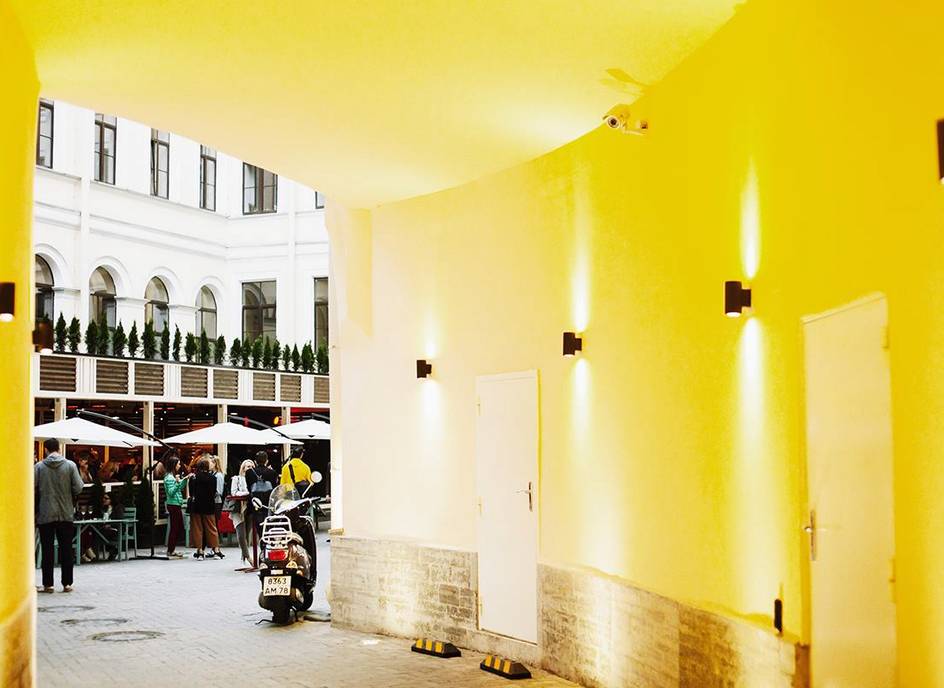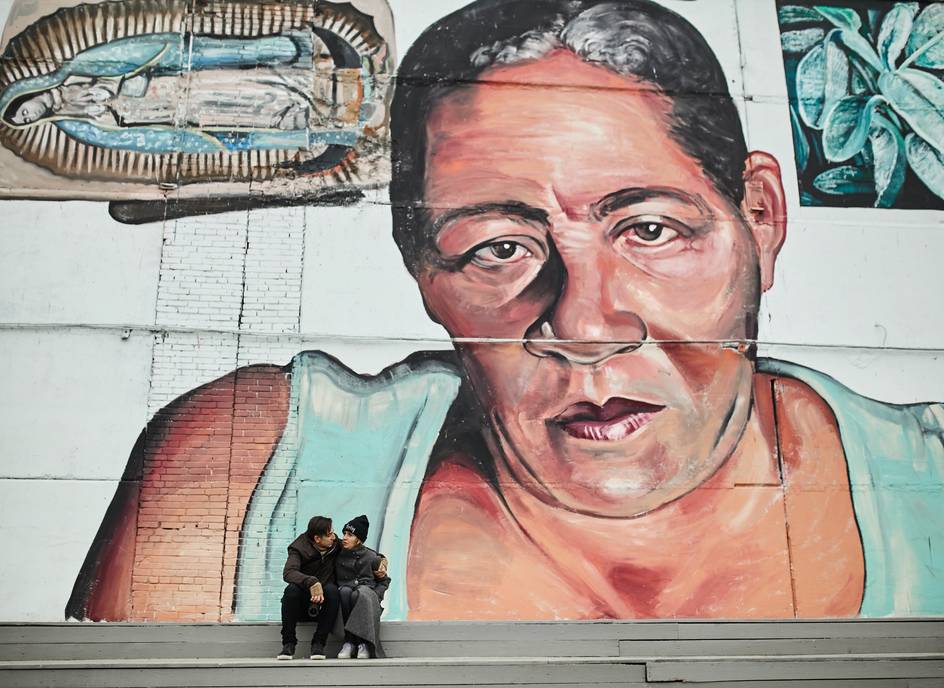War Minister’s estate
Sadovaya Street, 4
Absolutely incredible building, which is for some reason is very little known, which makes me personally feel pleased. You can hardly see any tourists here. Maybe they get distracted by Saint Michael's Palace which is right across the street. Actually, a downtown estate is a rare occurrence in St. Petersburg with its perfect streets, as if someone measured and drew them with a ruler, and ideally straight avenues. Therefore, we can consider this estate, built in 1870s for field marshal Dmitry Milyutin a unique exception to the rule. Modest and unremarkable façade is hiding a cutting-edge for that time layout and interiors which has been kept almost unchanged. The main staircase in Pompeian style is particularly good. In the estate Mulyutin worked, welcomed guests, met with Her Majesty and lived with his family. After the Revolution a hotel for high military officials appeared within these walls. By the way, the hotel is still there, and one of the rooms is located right in the former cabinet of the general.
Palace of Grand Knyaz Mikhail Alexandrovich (A.S. Menshikov’s House)
English Embankment, 54
Palace of Nikolay II’s younger brother Mikhail Alexandrovich Romanov is situated away from popular tours, on the English Embankment. This three-storey mansion with white tile facing has a complicated story. Initially it belonged to Knyaz Menshikov, but then after the capital’s rearrangement it was bought by the member of the Royal family. By the way, during the modernization, the garage was placed in the right outbuilding, since the new owner was a huge motor car lover. The mansion is also provided with a princely staircase with a lift, by which Knyaz got up to his chambers. After the events of 1917 and arrest of Mikhail Alexandrovich he was depored to Perm. In June 1918 the knyaz was executed by firing squad. Later, the palace was handed over to the Deaf and Mute Society, which still houses in the former Knyaz’s house.
Imperial stables in Petergof
ul. Avrova, 2

The biggest neo-gothic construction on the territory of Russia and a real protracted building for its time – Imperial stables complex in Petergof, built by architect N.L. Benois for Nikolay I, who was later recognising them as his masterpiece. 328 horse corrals, riding hall with Imperial box and accommodation for a stable department. If it weren’t for the Crimean War, there would have been a special pool to wash horses, but the funding was cut out. Stable riding hall has an amazing beam celling, which was inspired by one of the halls in British Queen’s residence in Hampton Court in London. During Soviet times, stables were used as a space for sanatorium and now the gorgeous complex is abandoned and, alas, is closed to the public. .
New Michael Palace
Palace Embankment, 18
This is one of the few absolutely non-secret places which I really love in Petersburg. It is probably mentioned on popular travel websites, but that fact does not spoil the charm of the place. Luxurious New Michael Palace once owned by a grandson of Emperor Nikolay I is the quintessence of Petersburg’s palatial style of the middle of XIX century. For over 20 years Great Knyaz Mikhail Nikolayevich held the post of Caucasian deputy, and then became the Chairman of the State. You can see him standing to the left from Nikolay II on Repin’s “Ceremonial Sitting of the State Council” painting. Unprecedented richness of the palace next to Peter and Paul Fortress was fascinating its contemporaries – great ceremonial rooms, abundance of gilding, expensive furniture – all of it reached our time almost unchanged. The palace got lucky - it wasn’t checked in by proletarians and was not turned into communal apartments. Instead Institute of Archeology and stacks of Institute of Eastern manuscripts were moved here.
Emir Bukhara’s house
Kamennoostrovsky Prospekt, 44
My favorite building in Petersburg – apartment house of Emir Bukhara on Kamennoostrovsky Prospekt, built in 1913. True Italian palazzo, which could probably fit in somewhere on the outskirts of Naples. House was erected completely on the Emir’s money by architect S.S. Krichinsky. Not only elite apartments with gorgeous interiors for future residents, but also huge apartments of the Emir himself with a winter garden and personal entrance door were settled inside these walls. The building was state of the art – electric lift, central heating and walls of the main staircase decorated with artificial marble with images of antique amphorae and a mascaron of Medusa Gorgon. The Emir never got a chance to live in his house – he had to run from Bukhara to Afghanistan in 1920, where he died 20 years later. Nevertheless, his house still stands, filled with 10-room communal apartments and prestigious quarters. That’s where you can see the real contrasts of Petersburg!
Small Marble Palace
Gagarinskaya ul., 3
Small Marble Palace once belonged to a morganatic wife of the Emperor Alexander II Princess Catherine Dolgorukoy. In his will Imperator asked Prince Alexander to take care of the financial support of the Princess in case of his death. After the assassination of his Majesty this estate was passed to Catherine, and she got an annual support of 100 000 rubles. The main staircase, the Golden Living room and the White Hall of the Palace are perfectly preserved. Also there was a Turkish room, a winter garden with a fountain and a pool and also a small “home” museum dedicated to Alexander II, opened for everyone. Now European University is set within the Palace.
Stebnock-Fermor’s House
English Embankment, 50

This estate, modest at the first glance, is famous by the fact that in 1859-1862 a well-known Prussian envoy Otto von Bismarck lived within its walls. Bismarck adored this cozy house and the view of Neva and Vasiljevsky Island. An army of Russian servants worked here for Bismarck: two German footmen, two coachmen, a door attendant, a cook, a livery footman and a visiting footman for his wife. The decoration of the second floor’s main doorway partially remains from the original XIX century interior. Now the estate is turned into a hostel, and the central hall with a ceiling painting from the end of the XVIII century is now an apartment of a Petersburg painter.









